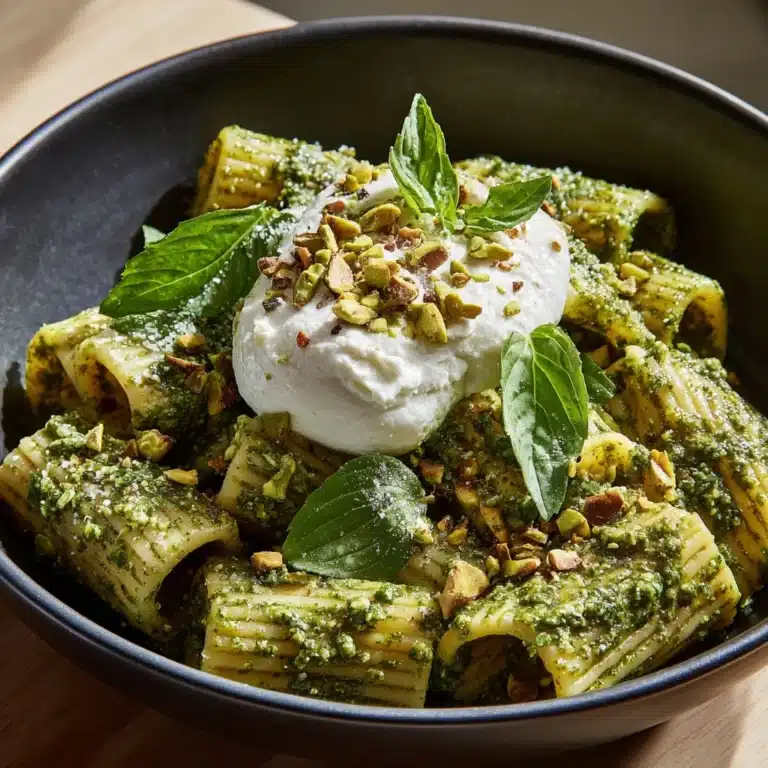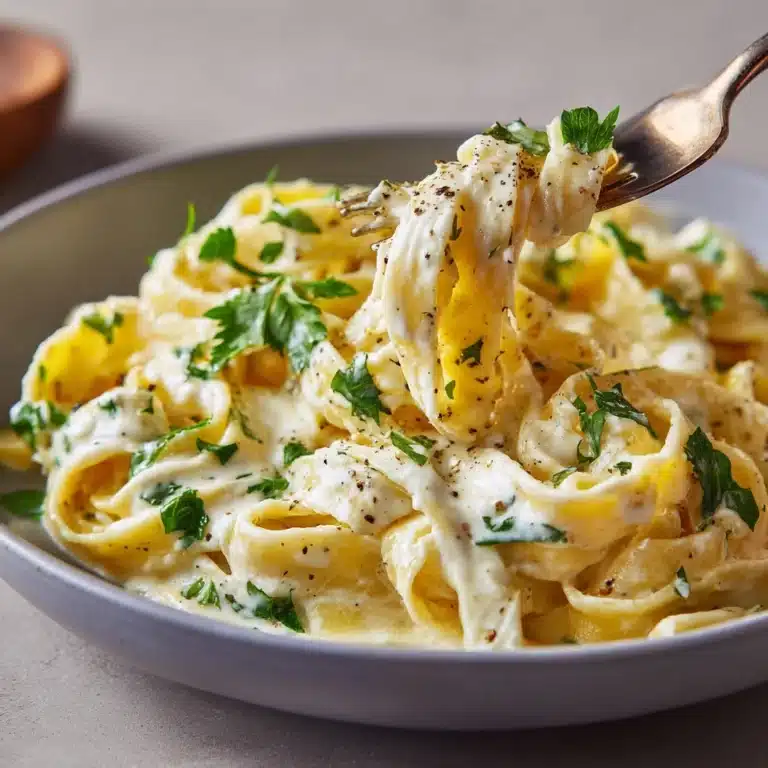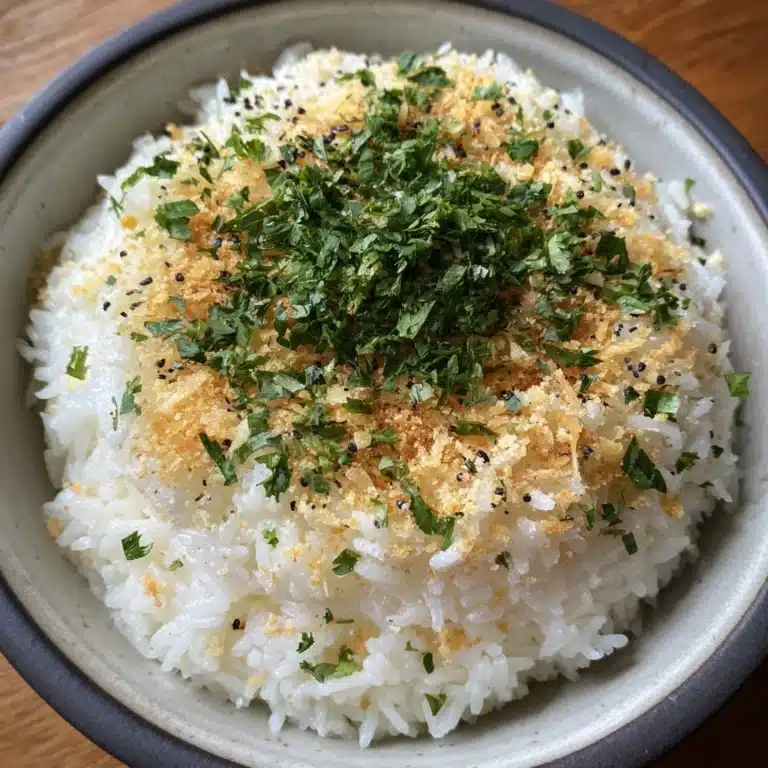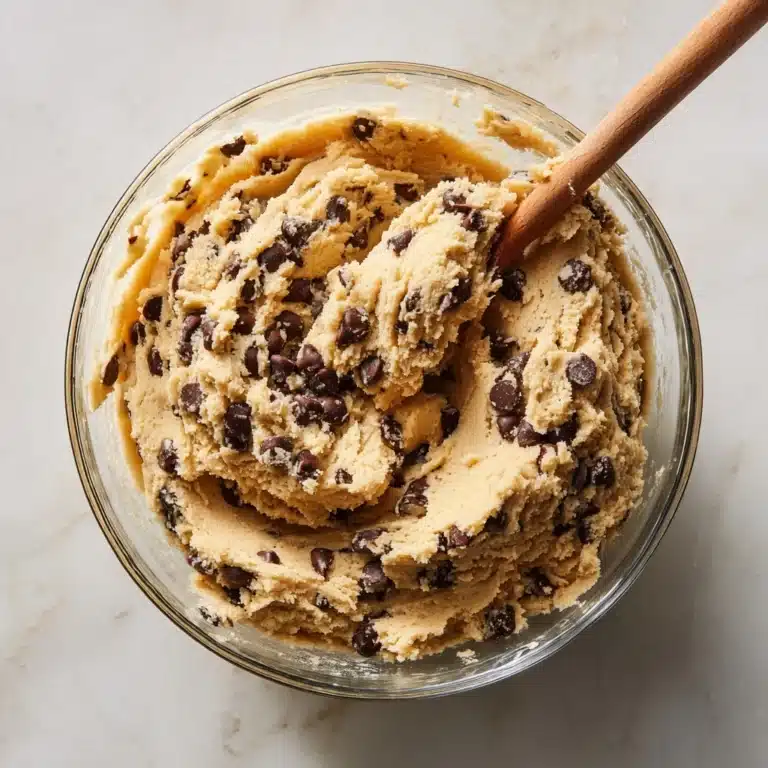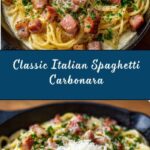Italian Spaghetti Carbonara Recipe
If you’ve ever craved a pasta dish that delivers on comfort, flavor, and pure Italian simplicity, let me introduce you to my favorite: Italian Spaghetti Carbonara. This legendary meal features just a handful of pantry staples—spaghetti, crisp guanciale, velvety eggs, and a shower of Pecorino Romano cheese—yet comes together as a symphony of creamy, savory perfection. The beauty of Italian Spaghetti Carbonara is in its authenticity and how quickly it transforms simple ingredients into a warming, mouthwatering masterpiece. If you’ve never tried making it at home, I’m genuinely excited for you to experience just how magical this classic can be!
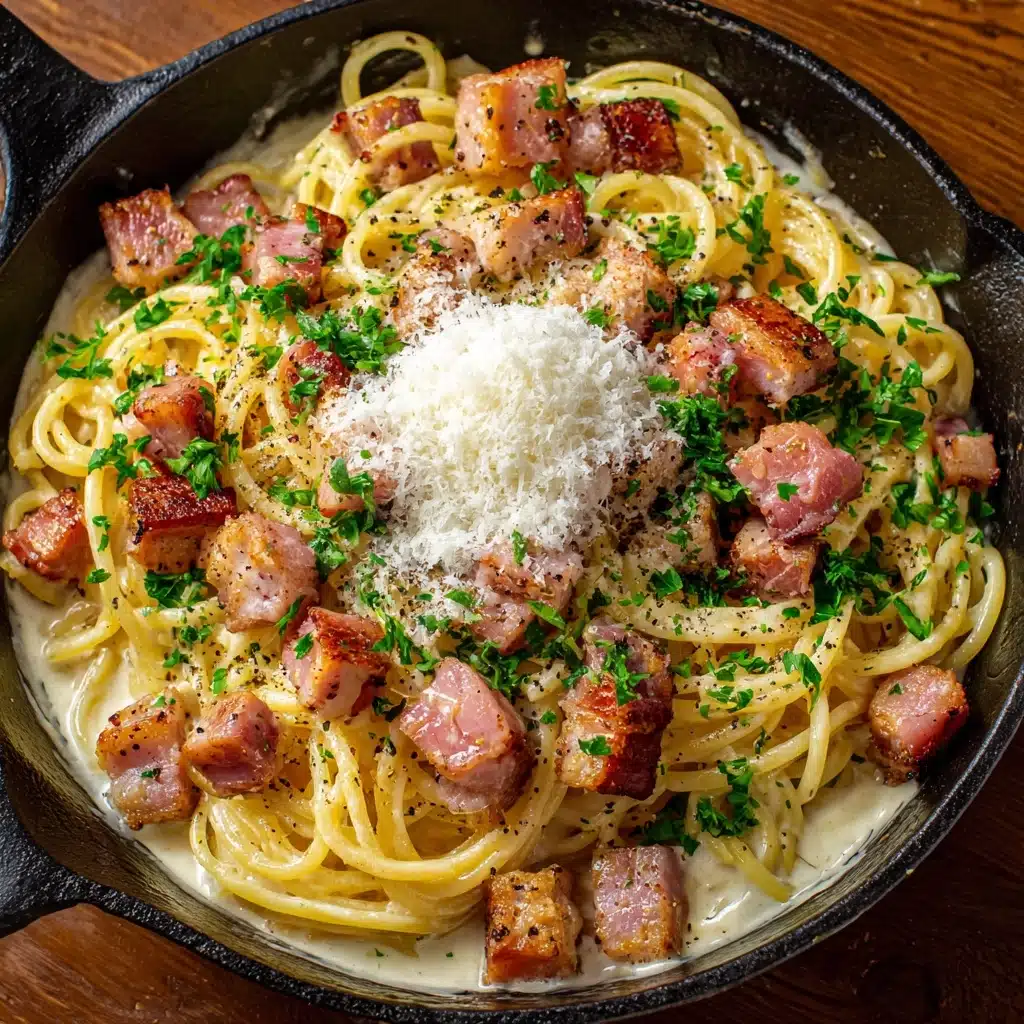
Ingredients You’ll Need
Italian Spaghetti Carbonara is all about letting a few stars shine. Each ingredient, humble as it may seem, brings a vital piece to the puzzle—whether it’s the smoky depth of guanciale or the subtle bite of freshly ground black pepper. Don’t be tempted to substitute or add too many extras; here, simplicity reigns and every component truly matters.
- Spaghetti: Choose a good-quality brand as the pasta is the backbone that holds all the flavors together.
- Large Eggs & Egg Yolks: The combined whole eggs and yolks create that irresistibly creamy, silky sauce (no cream needed!).
- Pecorino Romano Cheese: Freshly grated is key for both salty punch and smooth texture—don’t use pre-grated cheese here if you can help it.
- Guanciale: This cured pork cheek has a unique, rich flavor and crispy bite—you can use pancetta if you don’t find guanciale, but the taste is truly special with the real deal.
- Freshly Ground Black Pepper: Provides mild heat and rounds out the flavors.
- Salt: Just enough for the pasta water, as both guanciale and Pecorino bring lots of saltiness already.
How to Make Italian Spaghetti Carbonara
Step 1: Boil the Pasta
Start by bringing a large pot of well-salted water to a rolling boil. Drop in the spaghetti and cook it until it’s just al dente—as directed on the package—so it’s hearty enough to absorb the luscious sauce later. Reserve a full cup of the starchy cooking water right before you drain, as that will ensure your sauce achieves a glossy, restaurant-worthy finish.
Step 2: Prepare the Creamy Carbonara Sauce
While the pasta works its magic, grab a medium mixing bowl and whisk together your whole eggs, extra yolks, fresh Pecorino Romano, and a hearty pinch of black pepper. The goal is a silky, homogenous mixture that will melt into the hot pasta. This is the secret weapon behind every dreamy bite of Italian Spaghetti Carbonara.
Step 3: Crisp the Guanciale
Next, heat a large skillet over medium, and toss in the diced guanciale. Watch as it slowly renders and transforms into golden, crispy jewels—this takes about 5-6 minutes. The rendered fat is flavorful gold, so leave it in the pan; it may seem like a small detail but it’s essential for authentic Italian Spaghetti Carbonara.
Step 4: Marry Pasta and Guanciale
Drain your spaghetti (don’t forget that reserved pasta water!) and immediately transfer the hot noodles to the skillet with the guanciale. Toss vigorously so the pasta drinks up all that savory fat, setting the stage for that glossy sauce. Make sure the pan is off the heat before moving on to the eggs.
Step 5: Toss with Egg and Cheese Mixture
Now the magic happens: quickly pour your egg-and-cheese mixture over the hot pasta. Toss or stir constantly and briskly, letting the residual heat gently thicken the sauce without scrambling the eggs. Splash in reserved pasta water a little at a time until everything comes together in a creamy, luscious sauce that clings to each strand. This is the heart of true Italian Spaghetti Carbonara!
Step 6: Serve Immediately
Plate your pasta the moment it’s finished, while it’s still creamy and piping hot. Top with a little extra Pecorino Romano and a few cracks of black pepper for that signature Italian flourish. Trust me, it tastes like you’re at a trattoria in Rome!
How to Serve Italian Spaghetti Carbonara
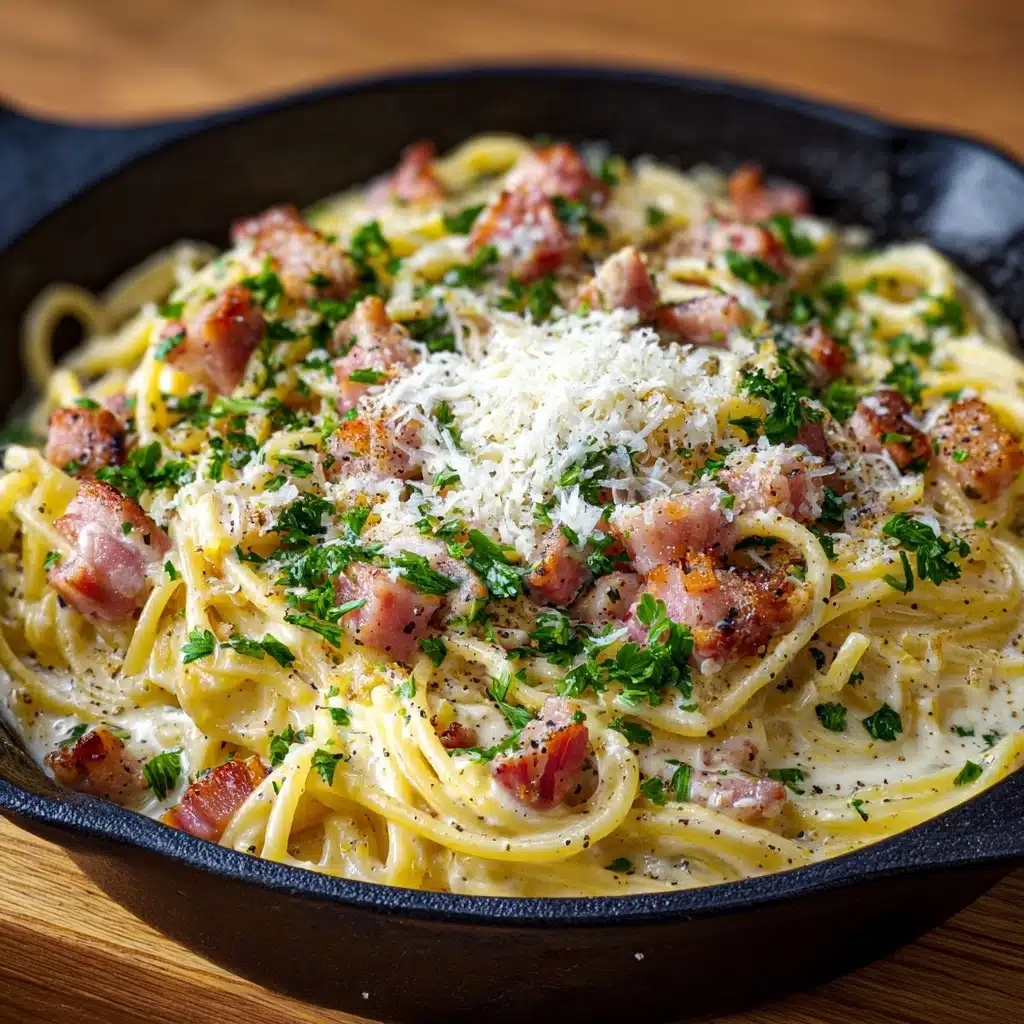
Garnishes
The classic finishing touch for Italian Spaghetti Carbonara is a generous dusting of freshly grated Pecorino Romano and a last hit of cracked black pepper. If you want to get a little fancy, add a few shavings of cheese on top or a sprinkle of fresh parsley for subtle color, though purists say keep it simple and let the sauce shine.
Side Dishes
Since Italian Spaghetti Carbonara is rich and filling, I love to keep the sides light—a crisp green salad with lemony vinaigrette or some simply sautéed greens are perfect. A basket of rustic bread is also nice, if only to mop up every golden bit of sauce from your plate!
Creative Ways to Present
If you’re entertaining, try twirling individual portions into neat pasta nests with tongs and topping them with an extra sprinkle of cheese. For fun, serve Italian Spaghetti Carbonara in warmed bowls or shallow plates for maximum visual appeal. Even a simple extra grind of pepper tableside makes the presentation feel extra special.
Make Ahead and Storage
Storing Leftovers
Italian Spaghetti Carbonara is truly at its best the moment it’s made, with the sauce at its silkiest. If you do have leftovers, store them in an airtight container in the fridge for up to 2 days. Just know that the sauce will absorb into the pasta and lose some of its signature creaminess.
Freezing
This is one dish I wouldn’t recommend freezing—egg-based sauces just don’t recover that perfect texture after thawing. If you’re craving Italian Spaghetti Carbonara, it’s worth taking the time to make it fresh.
Reheating
To reheat, gently warm the pasta in a skillet with a splash of water or milk over low heat, stirring constantly. The sauce may never be quite as silky as when it’s just made, but this method gets you as close to the original as you can. Avoid microwaving, which can toughen the pasta and scramble the sauce.
FAQs
Is Italian Spaghetti Carbonara made with cream?
Authentic Italian Spaghetti Carbonara does not use cream—the luscious sauce comes purely from eggs, cheese, and pasta water. Creamy results, no cream required!
Can I use bacon instead of guanciale?
Bacon can be substituted if you can’t find guanciale or pancetta, but it will impart a slightly smokier flavor. For the most traditional Italian Spaghetti Carbonara, guanciale is absolutely worth seeking out.
What’s the best cheese to use?
Pecorino Romano is traditional for its sharp, salty flavor and perfect meltability. Parmesan can be used in a pinch, but it will yield a milder taste. Freshly grated cheese is a must for the creamiest sauce.
How do I avoid scrambling the eggs?
The trick is to combine the egg-and-cheese mixture with the pasta off the heat, tossing constantly and relying on the pasta’s residual warmth. This ensures a creamy, custardy sauce—never scrambled eggs!
Can Italian Spaghetti Carbonara be made vegetarian?
While the classic uses guanciale, you can make a vegetarian version by omitting it and using smoked mushrooms or vegetarian “bacon.” Don’t forget to choose a vegetarian-friendly Pecorino Romano as well.
Final Thoughts
I can’t wait for you to try this Italian Spaghetti Carbonara recipe at home. It’s the kind of meal you’ll want to share with your favorite people—comforting, memorable, and impressively quick to make. Dive in, savor every bite, and let this timeless dish earn a top spot in your dinner rotation!
Print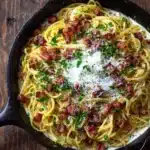
Italian Spaghetti Carbonara Recipe
- Total Time: 25 minutes
- Yield: 4 servings 1x
- Diet: Non-Vegetarian
Description
A classic Italian Spaghetti Carbonara recipe that features perfectly cooked pasta coated in a creamy, cheesy sauce with crispy guanciale or pancetta and a hint of black pepper.
Ingredients
Spaghetti:
- 12 ounces spaghetti
Sauce:
- 2 large eggs
- 2 large egg yolks
- 1 cup freshly grated Pecorino Romano cheese
- 1/2 teaspoon freshly ground black pepper
Others:
- 4 ounces guanciale diced (or pancetta)
- Salt for pasta water
Instructions
- Cook Spaghetti: Boil salted water and cook spaghetti until al dente.
- Prepare Sauce: Whisk eggs, yolks, cheese, and pepper in a bowl.
- Cook Guanciale: Crisp guanciale in a skillet.
- Combine: Toss hot pasta with guanciale, then add sauce, mixing quickly.
- Adjust Consistency: Add pasta water gradually for desired sauce thickness.
- Serve: Top with extra cheese and pepper.
Notes
- Use authentic guanciale for best flavor.
- Work swiftly to avoid overcooking the eggs.
- Best enjoyed fresh as it doesn’t reheat well.
- Prep Time: 10 minutes
- Cook Time: 15 minutes
- Category: Main Course
- Method: Stovetop
- Cuisine: Italian
Nutrition
- Serving Size: 1/4 of recipe
- Calories: 520
- Sugar: 2 g
- Sodium: 660 mg
- Fat: 22 g
- Saturated Fat: 8 g
- Unsaturated Fat: 12 g
- Trans Fat: 0 g
- Carbohydrates: 56 g
- Fiber: 3 g
- Protein: 23 g
- Cholesterol: 210 mg


